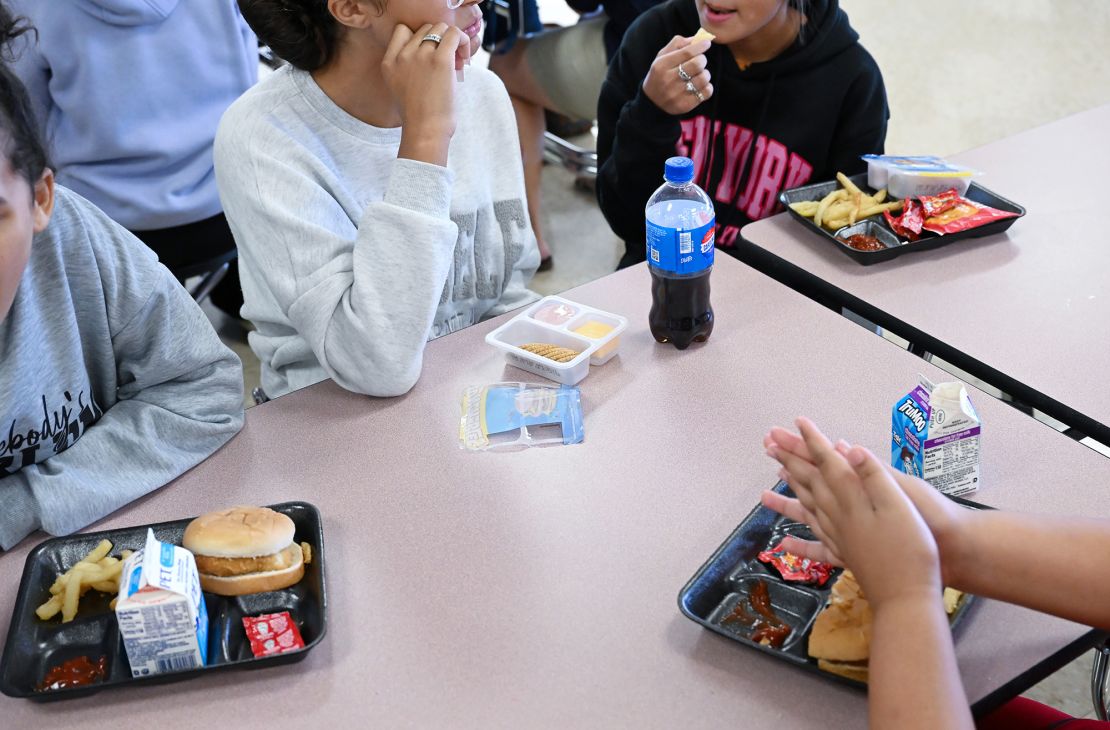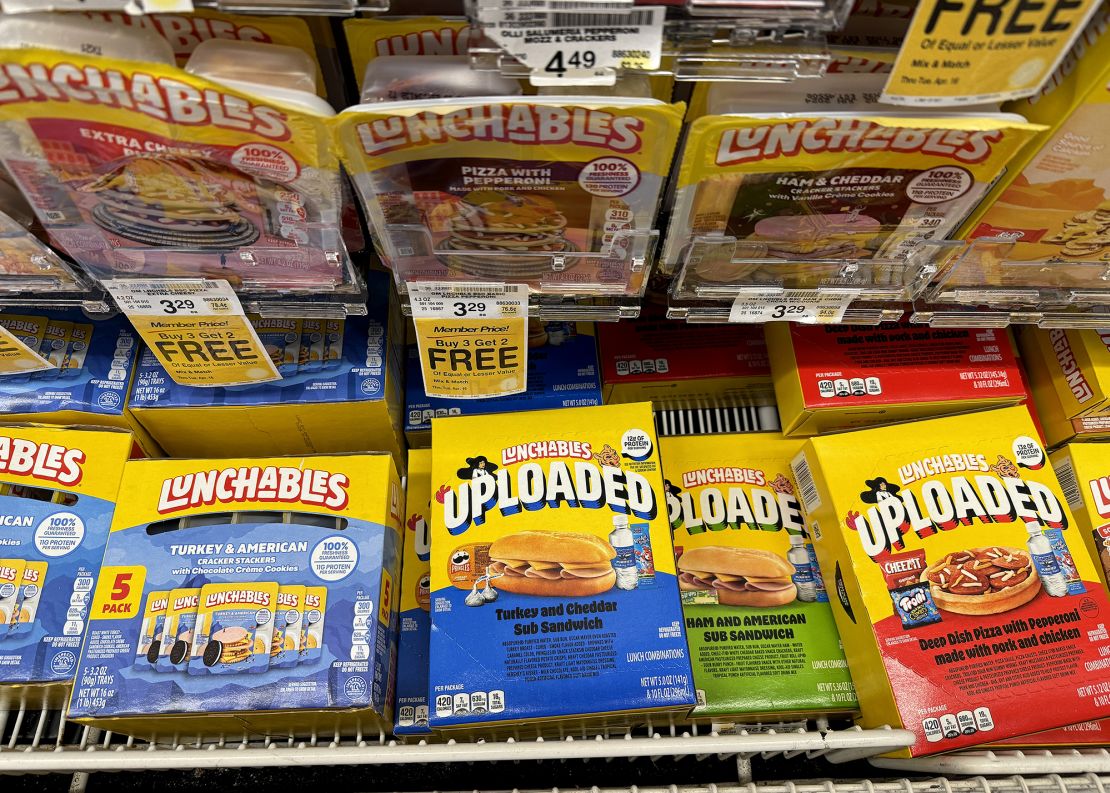Lunchables were a smashing success. Now they’re in crisis
by Admin

Americans are losing their taste for Lunchables.
Sales of the compartmentalized meat and cheese meal marketed to kids and their busy parents in colorful boxes slid 12% during the quarter ending on November 3, according to Circana data.
Lunchables’ slide is hurting its parent company, Kraft Heinz. Kraft Heinz’s sales dropped 2.2% last quarter, nearly half of which was driven by Lunchables. The company is scrambling for a fix to its nearly $2 billion brand.
“Lunchables for us is a top priority,” said Diana Frost, Kraft Heinz’s global chief growth officer, in an interview with CNN. “We are committed to its long-term growth.”
Lunchables are struggling because parents are worried that the meals aren’t healthy options, Lunchables’ strategy to get on school lunch menus turned into a black eye for the brand, and competition for meat and cheese alternatives at the grocery store has cut into sales, analysts say.
The end result isn’t just that Lunchables sales are down — numerous competitors have popped up, including Lunchly by YouTube stars Logan Paul and MrBeast. The brand’s market share has dropped about 25 percentage points since its 2018 levels to roughly 60% of the market this year, according to data from Euromonitor.
It’s not like Kraft Heinz has simply watched while the market swirled around it. The company made a bet in recent years on bringing Lunchables directly to school menus, estimating it was a $25 billion opportunity to expand.
But its plan backfired spectacularly.

Matt McClain/The Washington Post/Getty Images
In 2023, Lunchables developed two versions — Turkey & Cheddar Cracker Stacker and Extra Cheesy Pizza — that were advertised as “built for schools.” To meet the nutritional requirements of the federal National School Lunch Program, which reimburses schools for offering low-cost or free lunches, Kraft Heinz added more whole grains and protein to the two versions. Kraft Heinz also pitched Lunchables to budget-strapped school cafeterias as a way to save money on labor and other costs.
But the plan led to a firestorm of criticism from child-nutrition advocates.
Lunchables “undermine school nutrition programs and confuse families,” the Center for Science in the Public Interest, an advocacy group, said last year.
Then in April, watchdog group Consumer Reports found high levels of sodium, lead and cadmium in store versions of Lunchables. The group petitioned the US Department of Agriculture to remove the meals from school cafeterias.
Kraft Heinz criticized the findings and said the report contributed to Lunchables’ sales slide.
“The negative publicity that we received from that misleading interest group appears to be lingering longer,” CEO Carlos Abrams-Rivera said on an earnings call last month. “This is a brand that is focused on families and kids. So rebuilding that trust just takes some time.”
Frost said Lunchables are a “nutritious and delicious” meal for kids with protein, calcium and potassium. The company has reduced the sodium in Lunchables’ crackers by 26% and reduced saturated fats by 13% in the past two years, she added.
On top of the health criticism, Kraft Heinz misjudged school districts’ interest in Lunchables and ability to pay for them. The majority of school districts say the federal reimbursement rate is insufficient to cover the cost of producing a lunch, according to the School Nutrition Association, which represents cafeteria workers and directors across the country.
Earlier this month, Kraft Heinz said it was removing Lunchables from schools.
“The product didn’t meet our threshold in terms of performance, so we decided to not continue with the program,” Frost said. “This was decision was ours and ours alone and not influenced by any other party.”
Instant hit
Lunchables’ recent struggles are a steep fall for a brand that created a new category of food when it rolled out in the late 1980s.
Meat processor Oscar Mayer was looking for a way to repurpose some of its surplus bologna, which was losing appeal with the public.
Lunchables came packaged in regular and deluxe versions, modeled on TV dinner trays, with the higher-priced one including a mint and a napkin. (Oscar Mayer picked Lunchables from a list of names including Crackerwiches, Snackables and Mini Meals, according to Michael Moss’ 2014 book, “Salt Sugar Fat: How the Food Giants Hooked Us,” about the processed food industry.)
“It was so momentous for our shift toward processed food,” Moss told CNN in an interview. “Up until that point, there wasn’t much in the grocery store like that. It ushered in a wave of these fast food, prepared takeout products in the store.”
Lunchables were targeted to busy parents who felt guilty about not having the time to prepare their kids’ lunches. Lunchables, which came in bright yellow boxes that resembled wrapping paper, evoked images of a gift that parents could give kids for lunch, according to Moss.

Justin Sullivan/Getty Images
”When two or three kids look up at you longingly and wonder what kind of treat you’re packing for their lunch — our consumer research told us there was a lot of pressure on moms at that moment of the day,” Lunchables founder Bob Drane told Crain’s Magazine in 1992.
For kids, Lunchables were designed to give them a sense of “empowerment” when they pulled the box out of their backpacks and assembled their own lunch, Moss said.
“All day, you gotta do what they say. But lunchtime is all yours,” an early Lunchables slogan said, nodding at the control Lunchables gave kids over their meals.
Lunchables were an instant hit. In the first year, the brand hit more than $200 million in sales, according to Moss. By 1995, they crossed $500 million.
Lunchables kept coming out with new lines, such as pizza, burgers, tacos and dessert, to fuel sales growth.
Although it has tried to add healthier ingredients, such as fruit in 2023, most of its products are highly processed and high in sodium and saturated fat. A ham and cheese Lunchables with crackers contains 650mg of sodium and 7g of saturated fat.
Lunchables’ ‘transformation’
Despite Lunchables’ recent woes, Kraft Heinz says it’s investing in the brand.
The company said in a presentation last month that it plans to expand Lunchables’ flavors and launch a new advertising campaign to reach both parents and kids.
“Lunchables is in the midst of a transformation,” said Frost from Kraft Heinz. “We’re working on exciting innovation that we will unveil in the months ahead.”
The company is studying all parts of the offering, from product design to price to marketing, and conducting research to understand consumers’ preferences, she said.
Lunchables need to make additional changes to win over parents who have a higher nutrition bar for their kids’ meals than when the meals first came out, said David Garfield, the global head of industries at consulting firm AlixPartners.
“Lunchables are a great example of a brand struggling to hit a moving target,” he said. “Consumer expectations for nutrition have gone up.”
“Lunchables can’t aim for ‘nutritious enough’ to meet regulatory requirements or guidelines,” he said. “They need to do more to be considered a healthy option” for parents to give to their kids.
Americans are losing their taste for Lunchables. Sales of the compartmentalized meat and cheese meal marketed to kids and their busy parents in colorful boxes slid 12% during the quarter ending on November 3, according to Circana data. Lunchables’ slide is hurting its parent company, Kraft Heinz. Kraft Heinz’s sales dropped 2.2% last quarter, nearly…
Recent Posts
- Liverpool ends 15-year curse with statement win over Real Madrid
- The TSA-approved hack that allows travelers to bring a bottle of water through airport security
- Подводный WiFi, аквапонные фермы: как морские техностартапы привлекают инвесторов
- “Подводный интернет”: эта женщина может подключить беспроводную сеть на 3-километровой глубине
- Inside the wild world of Osaka’s dangerous, adrenaline-fueled float festivals